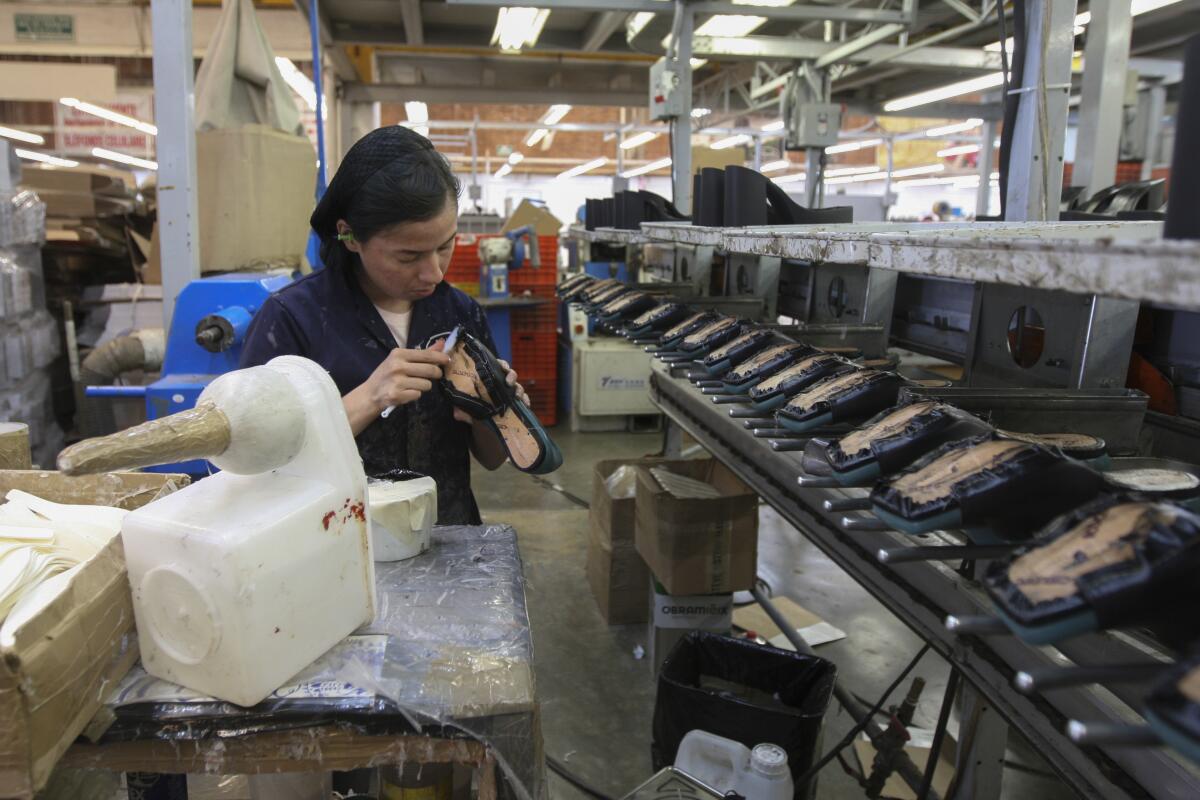Mexico overtakes China as the leading source of goods imported to U.S.

WASHINGTON — For the first time in more than two decades, Mexico last year surpassed China as the leading source of goods imported to the United States. The shift reflects the growing tensions between Washington and Beijing as well as U.S. efforts to import from countries that are friendlier and closer to home.
Figures released Wednesday by the U.S. Commerce Department show that the value of goods imported to the U.S. from Mexico rose nearly 5% from 2022 to 2023, to more than $475 billion. At the same time, the value of Chinese imports tumbled 20% to $427 billion.
The last time that Mexican imports exceeded Chinese imports to the U.S. was in 2002.
Economic relations between the United States and China have severely deteriorated in recent years as Beijing has fought aggressively on trade and made ominous military gestures in the Far East.
The Trump administration began imposing tariffs on Chinese imports in 2018, arguing that Beijing’s trade practices violated global trade rules. President Biden retained those tariffs after taking office in 2021, making clear that antagonism toward China would be a rare area of common ground for Democrats and Republicans.
As an alternative to offshoring production to China, which U.S. corporations had long engaged in, the Biden administration has urged companies to seek suppliers in allied countries (“friend-shoring’’) or to return manufacturing to the U.S. (“reshoring’’). Supply chain disruptions related to the COVID-19 pandemic also led U.S. companies to seek suppliers closer to the United States (“near-shoring’’).
Mexico has been among the beneficiaries of the growing shift away from reliance on Chinese factories. But the picture is more complicated than it might seem. Some Chinese manufacturers have established factories in Mexico to exploit the benefits of the 3-year-old U.S.-Mexico-Canada Trade Agreement, which allows for duty-free trade in North America for many products.
Derek Scissors, a China specialist at the conservative American Enterprise Institute, noted that the biggest drops in Chinese imports were in computers and electronics and chemicals and pharmaceuticals — all politically sensitive categories.
“I don’t see the U.S. being comfortable with a rebound in those areas in 2024 and 2025,” Scissors said, predicting that the China-Mexico reversal on imports to the United States probably “is not a one-year blip.’’
Scissors suggested that the drop in U.S. reliance on Chinese goods partly reflects wariness toward Beijing’s economic policies under President Xi Jinping. Xi’s strict COVID-19 lockdowns brought significant swaths of the Chinese economy to a standstill in 2022, and his officials have raided foreign companies in apparent counterespionage investigations.
“I think it’s corporate America belatedly deciding Xi Jinping is unreliable,” he said.
Overall, the U.S. deficit in the trade of goods with the rest of the world — the gap between the value of what the United States sells and what it buys abroad — narrowed 10% last year to $1.06 trillion.
More to Read
Inside the business of entertainment
The Wide Shot brings you news, analysis and insights on everything from streaming wars to production — and what it all means for the future.
You may occasionally receive promotional content from the Los Angeles Times.










